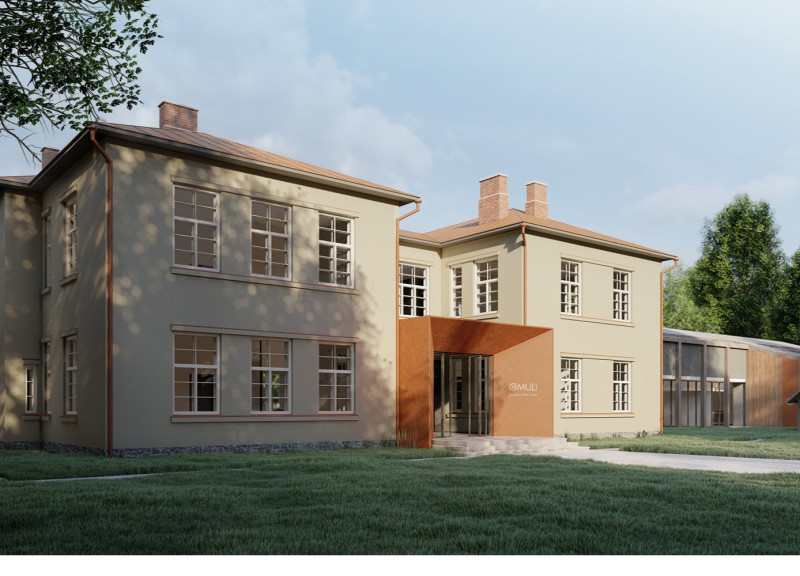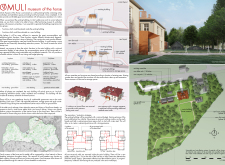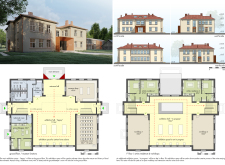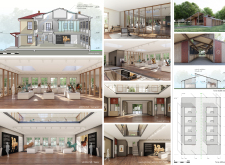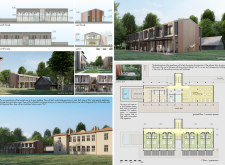5 key facts about this project
The museum's design integrates an existing building with new construction, emphasizing adaptive reuse. This approach minimizes environmental impact and allows for a seamless blend of traditional and contemporary elements. The layout consists of a main museum building enriched with exhibition halls and instructional spaces, alongside a guesthouse designed for visitors to experience the area’s cultural offerings. Additionally, the presence of a stable enhances the museum's educational focus on equestrian practices and breed preservation.
Unique Design Features
What differentiates the Omuli Museum of the Horse from similar cultural projects is its commitment to sustainability and community engagement. The architectural decisions reflect an understanding of the site’s historical context and future potential. The use of locally sourced materials, such as timber and metal roofing, not only contributes to the building’s aesthetic value but also supports sustainable building practices. Large glass facades in the exhibition spaces promote natural light while maintaining a visual connection with the surrounding landscape.
Innovative design elements include the multifunctional spaces that facilitate both structured exhibitions and spontaneous workshops. The first floor is dedicated to active artistic engagement, which encourages collaboration between artists and visitors. This dynamic environment fosters a deeper understanding of equestrian culture and promotes local artistry, making the museum a living part of the community.
Architectural Integration
The architectural integration of various components showcases a holistic approach to design. The existing building's renovation respects its historical significance while allowing for modern functionality. The guesthouse features simple, efficient layouts that prioritize comfort and accessibility, accommodating both individual visitors and groups. The new stable, designed with natural ventilation in mind, reflects best practices in animal care, further bridging the gap between the museum’s purpose and its operational needs.
Overall, the Omuli Museum of the Horse represents a carefully considered architectural endeavor that emphasizes sustainability, community, and cultural preservation. To explore the architectural plans, sections, and specific design ideas in greater depth, interested readers are encouraged to delve into the project presentation for more comprehensive insights.


